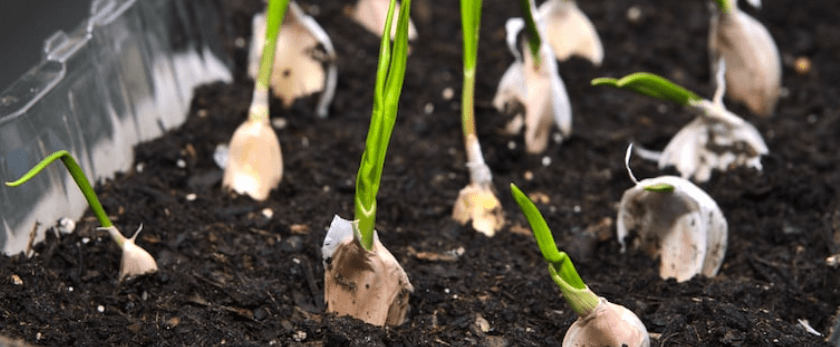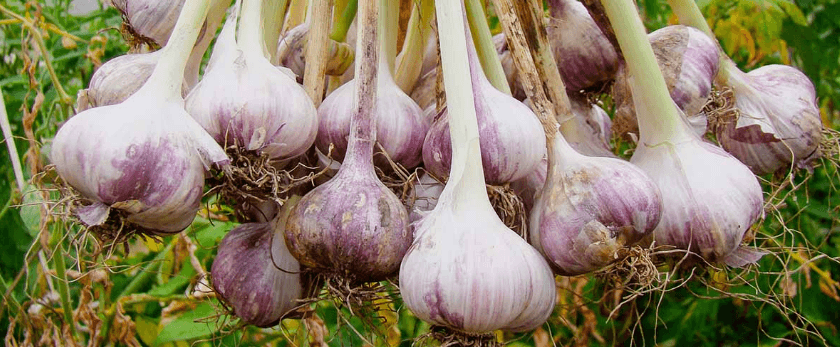Garlic is a versatile and flavorful addition to any dish, and growing your own garlic is not only easy but also environmentally friendly. By growing your own garlic, you can reduce your carbon footprint and avoid the harmful chemicals often used in commercial garlic production. Plus, it's a great way to save money and have a fresh supply of garlic at your fingertips. In this article, we'll discuss how to grow garlic, including caring for it, the best time to grow, and common problems you may encounter.
Caring for Garlic
Watering
Garlic plants require consistent moisture, but they don't like to be waterlogged. It's important to keep the soil evenly moist, but not soggy. Water your garlic plants deeply once a week, and adjust the frequency depending on the weather and soil conditions. If you live in a hot and dry climate, you may need to water more frequently. On the other hand, if you live in a cooler and wetter climate, you may need to water less often.
Light
Garlic plants prefer full sun, but they can also tolerate partial shade. If you're growing garlic indoors, make sure to place it in a spot that receives at least 6-8 hours of sunlight per day. If you're growing garlic outdoors, choose a sunny spot in your garden or yard.
Soil
Garlic plants thrive in well-drained, fertile soil. Before planting, amend your soil with compost or well-rotted manure to provide essential nutrients for your garlic plants. Avoid using chemical fertilizers, as they can harm beneficial soil organisms and pollute the environment.
Fertilizer
Garlic plants don't require much fertilizer, but a light application of organic fertilizer in the spring can help boost growth. Avoid using chemical fertilizers, as they can harm beneficial soil organisms and pollute the environment.
Pruning
Garlic plants don't require much pruning, but it's important to remove any flower stalks that may appear. These stalks, also known as scapes, can divert energy away from bulb growth. Simply snap off the scapes when they appear, and use them in cooking for a delicious garlic flavor.

Best Time to Grow Garlic
The best time to grow garlic depends on your location and climate. In general, garlic is planted in the fall, around 4-6 weeks before the first frost. This allows the garlic to establish roots before the ground freezes. However, if you live in a warmer climate, you can also plant garlic in the spring.
Common Problems with Garlic
Pests
Garlic plants are relatively pest-resistant, but they can still be affected by pests such as aphids, thrips, and onion maggots. To prevent these pests, make sure to rotate your garlic crop every year and keep the area around your garlic plants free of debris. You can also use natural pest control methods, such as introducing beneficial insects or using organic pest control sprays.
Diseases
Garlic plants can also be susceptible to diseases such as white rot, downy mildew, and rust. To prevent these diseases, make sure to plant your garlic in well-drained soil and avoid overwatering. If you notice any signs of disease, remove the affected plants immediately to prevent it from spreading.
Weeds
Weeds can compete with garlic plants for nutrients and water, so it's important to keep your garlic bed weed-free. You can use mulch to suppress weeds, or hand-pull them as they appear. Avoid using chemical herbicides, as they can harm beneficial soil organisms and pollute the environment.
Responsible Disposal Methods
Once your garlic is ready to harvest, it's important to dispose of the plant material responsibly. Garlic plants can be composted, but make sure to remove any flower stalks or diseased plants before adding them to your compost pile. You can also chop up the plant material and use it as mulch in your garden.
Conclusion
Growing your own garlic is not only a fun and rewarding experience, but it's also a great way to reduce your carbon footprint and avoid harmful chemicals. By following these tips on caring for garlic, the best time to grow, and common problems you may encounter, you can have a successful garlic harvest and enjoy the delicious flavor of homegrown garlic in your meals. Remember to dispose of your garlic plant material responsibly to help create a more sustainable future for our planet. Happy growing!










